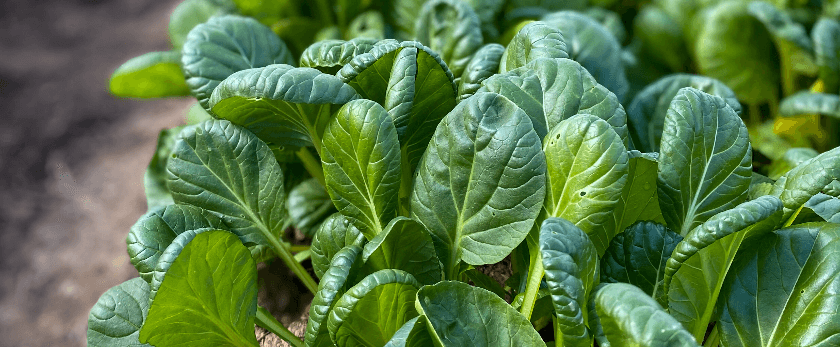Tatsoi, also known as spinach mustard or rosette bok choy, is a leafy green vegetable that is gaining popularity for its high nutritional value and easy cultivation. This Asian green is a member of the Brassica family, which includes other popular vegetables like broccoli, kale, and cabbage. It has a mild, slightly sweet flavor and can be eaten raw or cooked, making it a versatile addition to any meal.
If you're looking to add tatsoi to your garden or indoor plant collection, here's a comprehensive guide on how to grow and care for this nutritious green.
What is Tatsoi?
Tatsoi (Brassica rapa var. rosularis) is a leafy green vegetable that originated in China and is now widely cultivated in many parts of Asia, Europe, and North America. It has dark green, spoon-shaped leaves that form a compact rosette, making it a great choice for small gardens or containers.
Tatsoi is a cool-season crop, meaning it thrives in cooler temperatures and can be grown in both spring and fall. It is also a fast-growing plant, with a maturity period of just 30-40 days, making it a great choice for gardeners who want quick results.
How to Care for Tatsoi
Watering
Tatsoi prefers consistently moist soil, but not waterlogged. It is important to keep the soil evenly moist, especially during hot and dry weather. Water deeply once or twice a week, depending on the weather and soil conditions. Avoid overhead watering, as it can lead to fungal diseases. Instead, water at the base of the plant to keep the leaves dry.
Light
Tatsoi grows best in partial shade or dappled sunlight. It can tolerate full sun, but too much direct sunlight can cause the leaves to wilt and turn yellow. If you're growing tatsoi indoors, place it near a window that receives bright, indirect light.
Soil
Tatsoi prefers well-draining, fertile soil with a pH of 6.0-7.0. It can grow in a variety of soil types, but it thrives in rich, loamy soil. Before planting, amend the soil with compost or well-rotted manure to provide the necessary nutrients for healthy growth.
Fertilizer
Tatsoi is a heavy feeder and requires regular fertilization to produce abundant, healthy leaves. Before planting, mix in a slow-release fertilizer into the soil. Once the plant starts growing, you can also use a liquid fertilizer every two weeks to provide a steady supply of nutrients.
Pruning
Tatsoi does not require much pruning, but you can remove any damaged or yellowing leaves to promote new growth. You can also harvest the outer leaves as needed, leaving the inner leaves to continue growing.
What is the Best Time to Grow Tatsoi?
Tatsoi is a cool-season crop and can be grown in both spring and fall. It can tolerate light frost, making it a great choice for early spring or late fall planting. In warmer climates, it can also be grown in winter.
For spring planting, sow the seeds 2-3 weeks before the last frost date. For fall planting, sow the seeds 6-8 weeks before the first expected frost. You can also start the seeds indoors and transplant them outdoors once the weather is suitable.
Common Problems with Tatsoi
Tatsoi is a relatively easy plant to grow, but it can still face some common problems. Here are a few issues you may encounter and how to deal with them:
- Pests: Tatsoi is susceptible to pests like aphids, flea beetles, and cabbage worms. You can control these pests by handpicking them or using organic insecticidal soap.
- Diseases: Overwatering and poor air circulation can lead to fungal diseases like powdery mildew and downy mildew. To prevent these diseases, avoid overhead watering and provide adequate spacing between plants for good air circulation.
- Bolting: Bolting is when the plant produces flowers and seeds prematurely, usually due to high temperatures. To prevent bolting, plant tatsoi in partial shade and keep the soil consistently moist.
- Nutrient deficiencies: Tatsoi is a heavy feeder and may show signs of nutrient deficiencies if not fertilized properly. If you notice yellowing leaves or stunted growth, it may be a sign of nutrient deficiency. Use a balanced fertilizer to provide the necessary nutrients.
In Conclusion
Tatsoi is a nutritious and easy-to-grow green that can be a great addition to any garden or indoor plant collection. With the right care and attention, you can enjoy a bountiful harvest of this delicious and healthy vegetable. So why not give it a try and add some tatsoi to your next meal? Your taste buds and your body will thank you.










